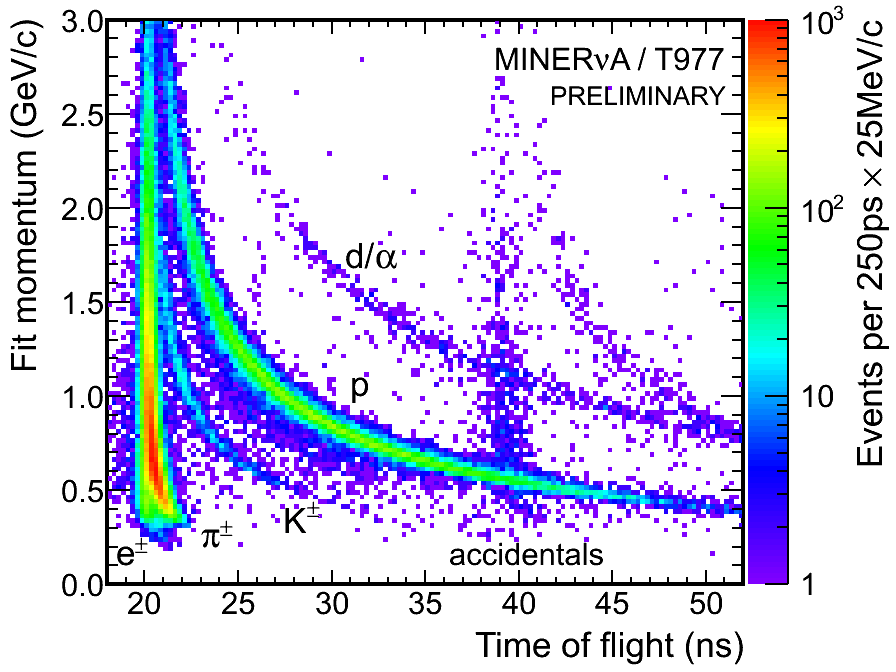Below are the most commonly used energies. Details that are unknown have been left blank. An explanation of the categories can be found below the table. Please see Particle Composition in MTest for recent updates.
| Energy | Mode1 | Protons | Pions2 | Highest Intensity3 | Muons | Kaons | electrons | Spot Size4 | Δp |
|---|---|---|---|---|---|---|---|---|---|
| 120 GeV | Protons | 100% | 0 | 5E5 | 0 | 0 | 0 | 6mm | 2% |
| 60 GeV | pions + | ||||||||
| 50 GeV | pions + | ||||||||
| 40 GeV | pions + | ||||||||
| 32 GeV | pions +/- | 500,000 | |||||||
| 30 GeV | pions +/- | 500,000 | |||||||
| 25 GeV | pions +/- | 600,000 | |||||||
| 20 GeV | pions +/- | 500,000 | |||||||
| 16 GeV | LEπ +/- | 87% | 1,000,000 | 100% | 10mm | <4.5% | |||
| 15 GeV | LEπ +/- | ||||||||
| 12 GeV | LEπ – | 500000 | |||||||
| 10 GeV | LEπ +/- | ||||||||
| 8 GeV | LEπ +/- | 55% | 750,000 | 98% | 12mm | 2.3% | |||
| 6 GeV | LEπ + | ||||||||
| 4 GeV | LEπ +/- | 31% | 400,000 | 74% | 13mm | 2.7% | |||
| 3 GeV | LEπ +/- | 2.7% | |||||||
| 2 GeV | LEπ +/- | <30% | 450,000 | 13mm | 2.7% | ||||
| 1 GeV | LEπ +/- | <30% | 69,000 | 2.7% |
- Mode indicates the configuration of the targets and collimators as explained here.
- Pion purity w/lead indicates the 1/4 inch lead scatterer, located in the MT4 region was in the beam. (Usually it is out) The scatterer does reduce intensity.
- Highest intensity refers to the highest number of particles per spill yet achived on the MT6SC1 scintillator, at the entrance to the facility, after the cerenkov detectors. It also assumes the lead scatterer is out.
- Spot size often depends on vagaries of the upstream tune, so it is not necessarily repeatable.
Don’t see what you need?
There are several targets, absorbers, and collimators in the MTest beamline which can be arranged in different configurations and tuned to produce secondary particles at single energies in the following configurations:
- 120 GeV: Protons
- 60 – 8 GeV: Pions, (some protons possible)
- 32 – 1 GeV: Pions, electrons, kaons, or broadband muons
- 1 GeV – 200 MeV: Pions, protons, kaons (Only available in ‘Tertiary’ Beamline)
If you are interested in a combination not listed above, contact the FTBF coordinator.
Energy resolution
Several measurements on beam momentum spread for electrons were performed and we consistently obtained 3% or better resolution from the lead glass calorimeter. Some of that spread can be attributed to the finite resolution of the calorimeter itself, so we estimate a 2 to 2.5% momentum spread for a wide variety of tunes. Since the beam is steered horizontally before the MT6 enclosure, there will be a dependence on position of the momentum, and thus it is possible to obtain better momentum resolution by correcting for position.
Tertiary beam – Now moved to MCenter


